HALLOWEEN ENDS
Directed by David Gordon Green. 2022. United States.
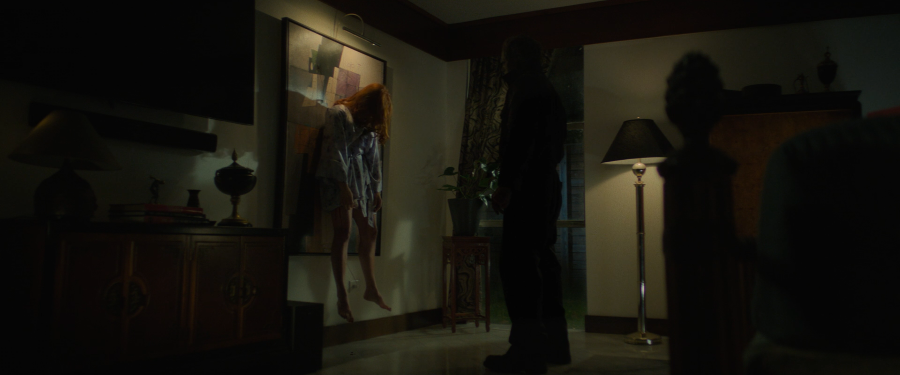
I. THE CALM BEFORE THE CONFUSION
I found myself thinking about the HELLRAISER sequels after seeing HALLOWEEN ENDS. Not the first batch of sequels, mind you. Not HELLBOUND or HELL ON EARTH. Not even BLOODLINE. No, the later sequels. You know... THOSE ONES.
If you don't know, many of the later HELLRAISER sequels were never really intended to be HELLRAISER sequels. They were screenplays retrofitted into being franchise installments, either by third-act rewrites or entire overhauls. Two of the films in particular reminded me of HALLOWEEN ENDS. Those films are HELLRAISER: INFERNO and HELLRAISER: HELLSEEKER, the fifth and sixth films in the franchise. Both of those films revolve around characters who are, as it turns out, quite dead and we are witnessing them wandering around their private hells.
Some of what we associate with HELLRAISER shows up in those films: pain, suffering, lead characters consumed by sexual obsession and the need for control, blood, grue, and chains. You'd be hard-pressed to find a HELLRAISER film that doesn't paddle in those pools, but something feels off about INFERNO and HELLSEEKER. They use much of the same iconography, but the narrative concerns of those films don't line up with their predecessors. HELLRAISER films rarely concern themselves with ennui, guilt, and existential despair in the way these two films do. HELLRAISER films usually deal with the suffering of the flesh. INFERNO and HELLSEEKER deal with the suffering of the soul.
No, INFERNO and HELLSEEKER feel less like HELLRAISER films and more like loose remakes of JACOB'S LADDER. That's why those films feel off like they're pretending to be something they're not. Because they are. There are times when the dual inspirations feel unstable or outright discordant, like oil and water or peanut butter and thumbtacks. We can see where one film has been stitched onto another. It feels off-balance. It feels wrong on an almost instinctual level. But then again, there are times when the parts of HELLRAISER play like a symphony with the parts of JACOB'S LADDER. They complement each other. They allow the film to explore familiar territory in new ways. But no matter how well they work together, those installments never come off feeling like the real deal. They always feel as if they're visiting the HELLRAISER franchise, not living in it. They feel like movies dressed up in the clothing of a completely unrelated franchise.
What does that have to do with HALLOWEEN ENDS?
HALLOWEEN ENDS might not feel like a remake of JACOB'S LADDER but it definitely feels like a movie that was never meant to be the concluding chapter in this particular trilogy of films. I can imagine a scenario in which David Gordon Green and Danny McBride came across a screenplay by two lesser-knowns, Paul Brad Logan and Chris Bernier, and after reading it thought "hey, this is touching on some of the same things as our previous two films in the franchise... maybe we can just have them shoehorn in Laurie Strode and Michael Myers and call it a day?", not realizing that the screenplay they just read had originally started as a rip-off of something else. Maybe something set in Maine?
So much of what happens in HALLOWEEN ENDS feels like it was taking place in some bizarro Stephen King universe like this was a screenplay never intended to be anything but a love letter to King's creations. We have a monster in the sewer and reports of missing people in a town that seems to be rotten to the core or under the spell of something unseen. It just reeks of IT. And what of a young nerdy boy with the last name Cunningham who becomes obsessed with something that eventually gives him swerve and swagger but leads him closer and closer to darkness? He even runs down bullies in a junkyard. Does this sound a little bit like CHRISTINE to anyone else?
No matter the origin story, at no point does this feel like a HALLOWEEN movie. Now maybe that is intentional. After all, the credits for the movie are all done in the same font as HALLOWEEN 3: SEASON OF THE WITCH, a franchise entry that is infamous for not being a real franchise entry. But this creates a confusing viewing environment. How am I supposed to take this film? As a risk-taking entry in an existing franchise or as a kind of spin-off story that just so happens to crossover into mainline franchise territory from time to time, a la ROGUE ONE: A STAR WARS STORY? I have absolutely no idea.
To be as fair to this movie as possible, I'm going to look at it both ways.
II. MAMMAS, DON'T LET YOUR BABIES GROW UP TO BE BAND GEEKS
First, a synopsis of sorts.
The film begins in 2019 on Halloween night. Corey Cunningham turns up at an upper-middle-class home for a night of babysitting. He makes some small talk with the perpetually distracted parents. He's taking a year off before looking at colleges. There's talk about how the previous year's events have left the kid feeling scared of the dark. After the parents leave, the young boy decides to pull a prank on Corey, locking him in the attic. Corey begins kicking the door to open it as the boy mocks him. We're only 10 minutes into the movie and our 18 or 19-year-old protagonist is being bullied by a child. This will happen many times throughout the film.
The boy's parents walk through the front door just as Corey gives one final kick. The hinges give. The door swings open, knocking the young boy over the banister. He falls to his death. Cue credits.

Three years later, Corey is a social pariah, shunned by most of the Haddonfield residents due to his aggravated manslaughter conviction. He works at a junkyard and is gifted a motorcycle by his boss/stepfather. Corey has a run-in with a quartet of vicious high school marching band members who knock him on his ass (once again bullied by children). Thankfully, Laurie steps in and saves the day. Noticing Corey has cut his hand during the altercation, Laurie drives him to the hospital where he is treated by her granddaughter Allyson who is working there as a nurse.
Speaking of Laurie, she has sobered up in the four years since Michael went missing. She owns a fancy house on a nice street that she shares with Allyson. Laurie spends her days baking pumpkin pies and decorating for Halloween in between writing her self-help memoirs. She runs into a now-retired Frank Hawkins at a grocery store. The two awkwardly flirt before Laurie runs into the sister of a woman who was left crippled after being attacked by Michael four years earlier. The woman blames Laurie for her sister's afflictions.
Allyson has an immediate (and frankly unbelievable) attraction to the disheveled, socially awkward Corey and asks him out. Corey refuses but eventually gives in, joining Allyson at a Halloween party at Lindsey Wallace's bar. After being confronted by the mother of the boy he accidentally killed three years ago, Corey runs off, ditching Allyson. He is stopped and bullied once again by the roving band of band geeks and tossed off a bridge. They drive away, leaving the unconscious Corey in a ditch.
Corey wakes up inside a sewer tunnel. When he attempts to leave, he is attacked by a feeble Michael Myers. After a brief staring contest, Michael relents, and Corey runs off. Corey is grabbed outside the tunnel by a hobo who demands Corey return to Michael and bring him his mask. Corey once again accidentally commits murder, stabbing the hobo to death.
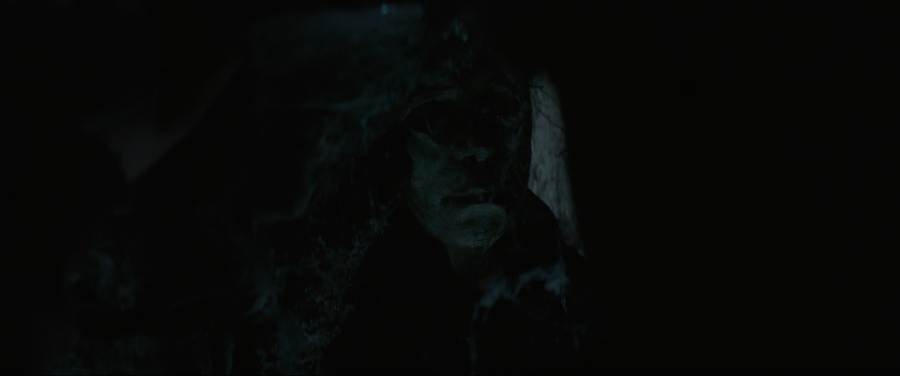
To make a damn near two-hour-long story short, Corey and Allyson begin their romance anew as Corey becomes more and more disillusioned and fed up with everyone in Haddonfield bullying him, especially those pesky band kids. Allyson and Corey have a kind of bond that is incredibly unhealthy in real life but is supposed to be romantic and understandable in this film. She survived trauma. He caused trauma. They are both looked at as freaks of one kind or another. They talk about leaving Haddonfield. More specifically, they talk about burning it all down.
If all of this wasn't Starkweather enough for you, Corey begins tag teaming with the dilapidated Michael. Corey eventually manhandles the masked maniac and steals his mask. He systematically wipes out every bully in his life one by one. Laurie had caught on to the potential darkness brewing inside Corey days ago. She tries again to get Allyson to come to her senses but fails. She's leaving town with him tonight.
Corey can't have Laurie coming between him and Allyson. Oh no, that won't do at all. He decides to pay her a little visit, unaware that someone else is planning on stopping by that night.
III. SWING BATTA BATTA
You will not have to venture far into the badlands of Twitter film discourse to find someone praising HALLOWEEN ENDS for "taking wild swings" and/or for "trying something new". Those are poor ideas when you're two films deep into a trilogy that is supposedly telling a cohesive story. If you begin to get a creeping thought in the back of your head that David Gordon Green and his cohorts forgot to plan all of this out in advance, you are definitely not alone. HALLOWEEN ENDS jettisons much of the previous installments in lazy, baffling ways. It needs to do this because otherwise, the story it wants to tell will not work.
Laurie Strode, the woman who has spent two-thirds of her life obsessing over Michael Myers, suddenly gets over forty years of neuroses within a four-year time span? This unhinged ball of agoraphobia, crippling anxiety, fear and loathing, and pathological obsession... a woman who went off the deep end to such a degree that she lost her only child... a woman that built a home expressly to catch and contain a serial killer who may or may not ever escape custody... she just got some therapy, put down the bottle and is now a happy homemaker baking pumpkin pies? Are we supposed to buy that the Laurie Strode of HALLOWEEN 2018 and HALLOWEEN KILLS wouldn't be out for blood after Michael killed her daughter? Are we supposed to believe that she wouldn’t be starting another gun collection and riding around town every day looking for him, knowing damn well that he is still out there?
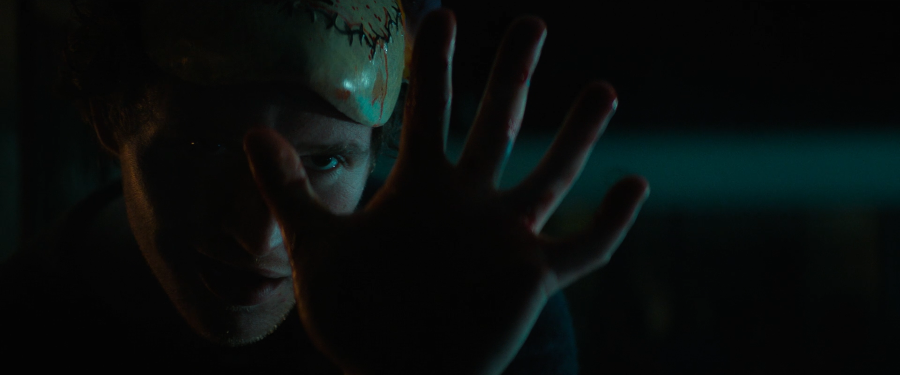
The Michael Myers of HALLOWEEN KILLS who took down a dozen armed citizens without breaking a sweat, who survived being hit by a car, being shot multiple times (including a bullet to the face), repeated stabbings and bludgeonings, just… what? walked away four years ago? Went into hiding out of fear, maybe? Boredom? Apathy? Rising costs of heating your home in the winter? What was all this talk about Michael "transcending" with each kill? It seemed to make him invincible. So what could have presented enough of a threat to make him flee into the sewers? You cannot spend an entire film buffing your villain into an unstoppable force and then nerf him to oblivion without an explanation. It feels like there is a missing film between HALLOWEEN KILLS and HALLOWEEN ENDS that explains what the hell caused this once unstoppable killing machine to devolve into a shaky old man living in a sewer tunnel.
Laurie Strode’s paranoia about Michael was validated in 2018. She was proven right in the most inarguable way imaginable. The one person who never treated Laurie like a disposable nutbag was Allyson. You would think those two characters would have an unshakable bond, yet all it takes is one date with a scruffy guy with zero charisma for Allyson to want to leave Laurie behind. Worse, when Laurie warns her that she sees something in Corey, something that is ringing her alarm bells, Allyson refuses to listen. She chastises Laurie for being obsessed with Michael, for not getting over him, and for causing all this mayhem. That seems so remarkably out of character for Allyson. It doesn't feel genuine, not in the slightest.
Nothing does.
HALLOWEEN ENDS does not feel like a proper conclusion to this trilogy. It feels detached from the previous films. When you need to retcon two films worth of character motivation and development to make your story work, that story is broken on a fundamental level. Taken as a HALLOWEEN film, this would have worked much better back in 2018.
Imagine: Michael went missing after Loomis shot him back in 1978. Michael has been subsisting in the sewers for all these years, feeding off the occasional victim. Laurie is living a happy life with her granddaughter. Laurie is an author now, writing her memoirs. Her story brings Michael Myers back into the consciousness of the town. He begins to stir. The Corey side of the story starts to happen. Corey’s victims feed Michael strength. He emerges from the sewers and begins his trek across Haddonfield to find Laurie.
That’s a perfectly fine set-up for a different chronology, but not as the third part of this trilogy. The thematic concerns of what terror does to a community transfer over just fine, but is the lead character in this trilogy Haddonfield, or is it Laurie Strode? If Laurie is the lead, why cut out all of her character growth and trivialize her trauma to the point where it resolves through a time jump and a single disposable line of exposition from Allyson? Why sideline her yet again to focus on a new character we barely have time to relate to before he descends into serial murder?
Neither Laurie nor Haddonfield are the lead character here. Corey Cunningham is, and he is a strange fit for the role this film wants him to play. The central theme of this film carries over from HALLOWEEN KILLS. It is the infectious nature of fear and violence. HALLOWEEN ENDS is every bit as subtle about it, too. Corey cuts his hand early on in the film. As the movie progresses, the cut gets more infected. In case that was too subtle, the frequency in which Laurie talks about the infection of evil increases. It is all very in your face, as if this was something profound.
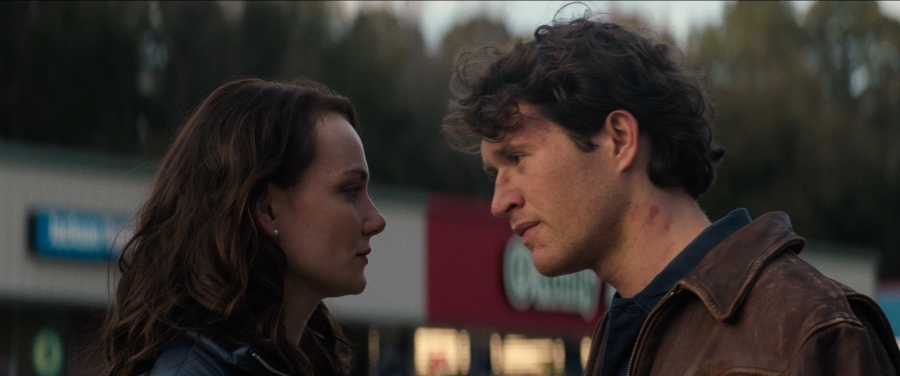
Corey is not the appropriate lead for this story. In the opening scene, the child Corey is babysitting mentions that Michael Myers only kills babysitters, not kids. When Corey kicks that door open, he accidentally takes this child’s life. The movie is signposting that Corey and Michael are different but similar. When Michael stares into his eyes, I think we are to believe there is some transference of evil going on, but a character like Corey would certainly feel it and struggle with it, right? After all, we see Corey on numerous occasions lamenting the death of that young child. He seems perpetually grieving over it, absolutely wracked with guilt. That is a far cry from little Michael Myers, a walking manifestation of evil who purposefully stabbed his sister to death.
Now, a thought experiment: remove Michael from the equation. Corey accidentally killed a boy and it ruined his life. His grief and guilt don’t matter to the townsfolk. Nothing he can do can make up for it. As the bullying increases, so does the isolation. He begins to become more and more disillusioned and desperate. His guilt turns to hatred. He begins to embrace the label this town has branded on his back: murderer.
Corey strikes up a relationship with a young woman. Her overprotective grandmother, a survivor of violence, disapproves. She can feel the darkness emanating from him. Corey and his lover plan to leave town, but Corey needs to settle some business first. He tracks down his bullies, killing them one by one, before setting his sights on the last obstacle: the grandmother who recognizes his evil intent.
There. The same basic plot without sacrificing two films worth of character development. Sure, it comes close to being a poverty row remake of BADLANDS, but at least it doesn't reduce one of the most terrfying movie maniacs to a feeble old man who cannot hold his own against a guy routinely beaten up by high schoolers. Same story, same beats, same outcome.
So why is this a HALLOWEEN film, again?
IV. SOME WHEELS DON'T NEED TO BE REINVENTED
Maybe it’s the pandemic that’s to blame. HALLOWEEN KILLS and HALLOWEEN ENDS were supposed to be filmed back-to-back. Perhaps the COVID delays in shooting that cut that schedule in half allowed David Gordon Green and Danny McBride too much of an opportunity to rethink their approach. It’s difficult to imagine the lousy, loud, and vomitously socially conscious script for HALLOWEEN KILLS was completed in the same atmosphere as the screenplay for HALLOWEEN ENDS. They couldn’t be any less similar in approach.
Perhaps HALLOWEEN ENDS would have looked much different. It would have started in a great rush of momentum with Laurie Strode walking out of the hospital, knife in hand, to enact bloody vengeance on Michael. HALLOWEEN KILLS might have been awful, but it set up a revenge film wonderfully. It was brutal and cruel, precisely what needs to come before a cathartic rampage of vengeance. Alas, we’ll never get a satisfying conclusion to this story now.
It was sacrificed for The Message.
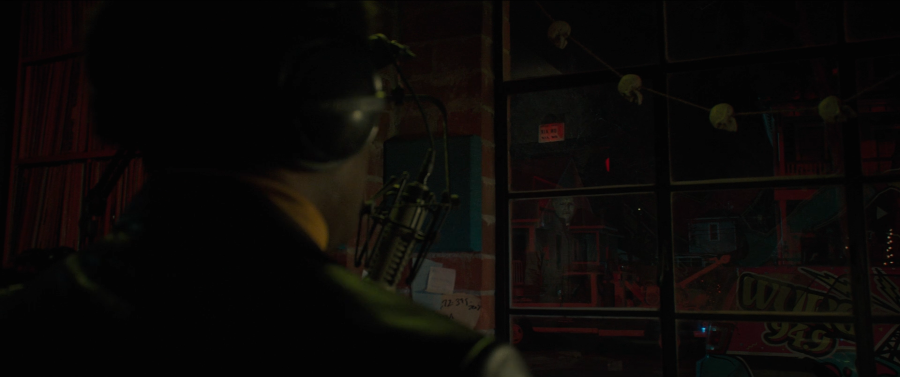
If you’ve seen HALLOWEEN ENDS, I want you to sit and think about it for a second. Think about the moral lesson it was trying to teach, the nugget of social truth at its core. Let it roll around in your head for a few minutes. Concentrate on it. What is it saying? Is it anything you didn’t already know before you bought a ticket?
The amount of horror films that boil down to “violence begets violence” are far too numerous to list. I wouldn’t even see the point of trying. Why bother? It’s a lesson we all learned at a young age. It’s highly doubtful anyone went to see THE HILLS HAVE EYES and had a philosophical epiphany. Sure, it’s nice when a slasher movie has something to say but is that something illuminating or enlightening? Profound or intriguing? Or is it another rumination on something we consider everyday, common knowledge?
HALLOWEEN ENDS tells the same moral lesson we heard in HALLOWEEN KILLS, just in a softer tone of voice. Unfortunately, it’s so intent on telling that lesson again that it forgets it needs to be a satisfying conclusion to a story already in progress. There’s a reason it’s divisive, and it has nothing to do with a rejection of intellectualism or thoughtful storytelling. It’s because HALLOWEEN ENDS is a movie made for the filmmakers, not the audience.
I’m sure there are people working the lines at McDonald’s who love to cook. They dream of being world-class chefs. They think about how much better the Big Mac would be if it were wrapped in prosciutto, and covered in sauteed wild mushrooms. It would add so much to the hamburger. And you know what? They’re absolutely right, which is why I’d be happy to order that burger at a restaurant that serves that kind of burger. But when I order a Big Mac, I expect a Big Mac. That’s what I want, regardless if that’s what the cook wants to make.
In HALLOWEEN KILLS, Laurie tells us:
“I always thought Michael Myers was flesh and blood, just like you and me. But a mortal man could not have survived what he’s lived through. The more he kills, the more he transcends into something else, impossible to defeat: fear. People are afraid. That is the true curse of Michael. You can’t defeat it with brute force.”
Hmm. Really? Because I’m fairly certain that Laurie defeats it with two small kitchen knives and a refrigerator.
David Gordon Green and his co-writers reverse course on everything the previous two films told us. Everything we learned was a lie. Sure, both films contain narrative elements about how evil must be confronted lest it overtake us. HALLOWEEN KILLS says that Michael, the embodiment of evil, will always be around even if we cannot see him. HALLOWEEN ENDS says that evil doesn’t die. It merely changes shape. All of that is well and good for The Message, but what about for the MOVIE? Didn't we buy a ticket to see a HALLOWEEN movie?
I enjoyed this film but not as a whole and not as a HALLOWEEN sequel. That version of the Corey Cunningham story I outlined somewhere up there? I’d love to see that movie. It’s an interesting story. But it’s a story that doesn’t belong in the middle of a HALLOWEEN movie, let alone in the final installment of a trilogy. The point of the final film in a trilogy is the confrontation between the antagonist and the protagonist. It’s to not only bring the story to a close but to bring the characters to a close, to complete their arcs, and to find closure.
HALLOWEEN ENDS sidelines its protagonist and antagonist. In their places are thematic stand-ins. Corey for Michael. Allyson for Laurie. Why in the hell would I ever accept substitutes when the stars are sitting on the bench, ready to play?
The answer, at least with this film, is that I have to accept them because the filmmakers crippled the stars themselves. Green and his merry band of writers reduced Michael to an invalid and Laurie to a doting, frowny-faced party pooper. Why? So they could have the villain commit suicide so his new girlfriend would hate her grandmother because… why exactly? Oh, because the cycle needs to continue. That is The Message, after all.
And of course, Corey needs to die so we can get that pesky audience-related business out of the way. We need to set aside at least five minutes of this nearly two-hour-long film for an underwhelming kitchen brawl between Laurie and Michael, a fight which ends in her favor after very little fuss. Laurie pins Michael to her kitchen table with knives, strips off his mask, and tells him, “I thought you were the boogeyman but you’re not. You’re just a man who is about to stop breathing”. She cuts Michael's throat while David Gordon Green cuts the audience's throat. We all bleed out together.
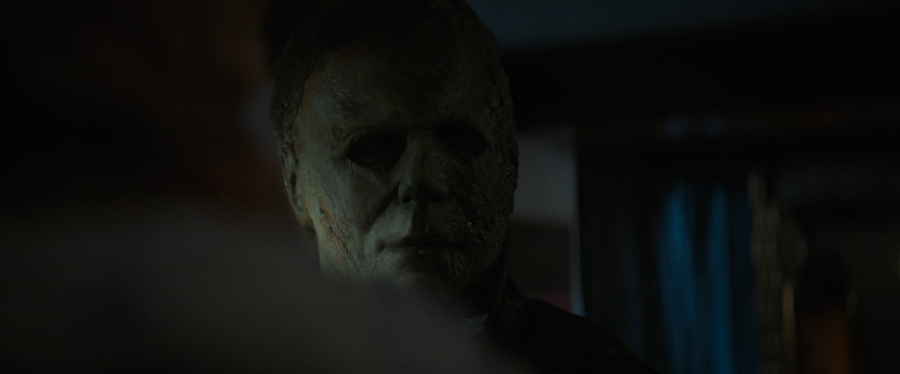
Remember the speech I quoted above from HALLOWEEN KILLS? It doesn’t matter at all. The only thing that matters is The Message. Not the continuity. Not the fans. Not the dramatic payoff we all thought was building up over the past four years. None of that matters. Green didn’t want to make me the Big Mac I ordered. He put those fucking mushrooms on it.
I don’t think HALLOWEEN ENDS is a bad film. I just think it’s a horribly misguided one. I think David Gordon Green tried to course-correct after the abysmal HALLOWEEN KILLS but ended up flying the plane right into a mountain. I’ve seen people online trying to defend the film by citing that font used in the opening credits. “See, it’s telling you right from the start, this is going to be different, just like HALLOWEEN 3: SEASON OF THE WITCH”. Sure, except HALLOWEEN 3 didn’t try to be HALLOWEEN 3. Laurie Strode and Michael Myers were not awkwardly shoehorned in between all the wacky Stonehenge shit and the murder bots.
It’s strange but I can hate this movie and like it at the same time. It all depends on what I’m choosing to focus on and what I’m willing to ignore. But I don’t think that’s a good thing. Again, I’ve seen people argue that because this film is so radically unfocused, it’s infinitely more interesting than a bog-standard HALLOWEEN sequel would have been. I think that’s reaching. That’s a cope, right there.
A good movie is what it is. You don’t have to engage in mental gymnastics or write an 8,000 word essay on why it’s also not what it’s not. A good film is self-evidently good. HALLOWEEN ENDS isn’t self-evidently anything but confused. As a finale, it’s abysmal. As a reboot, it could have been great. As a side story, it’s pretty good. But what is it other than a Big Mac with mushrooms on it? An artistically minded mess? A woefully misguided mistake? It’s all of those things.
It’s also a film that forgets what its core audience wanted to see. It serves the filmmakers, not the people who have been invested in the franchise for decades. It’s kind of insulting in that regard. But I’m sure the foul taste will fade by the time the franchise is rebooted again in 2025. HALLOWEEN ENDS is the title of a movie, not a declaration of intent. If this ending didn’t suit you, there’s always another one right around the corner.